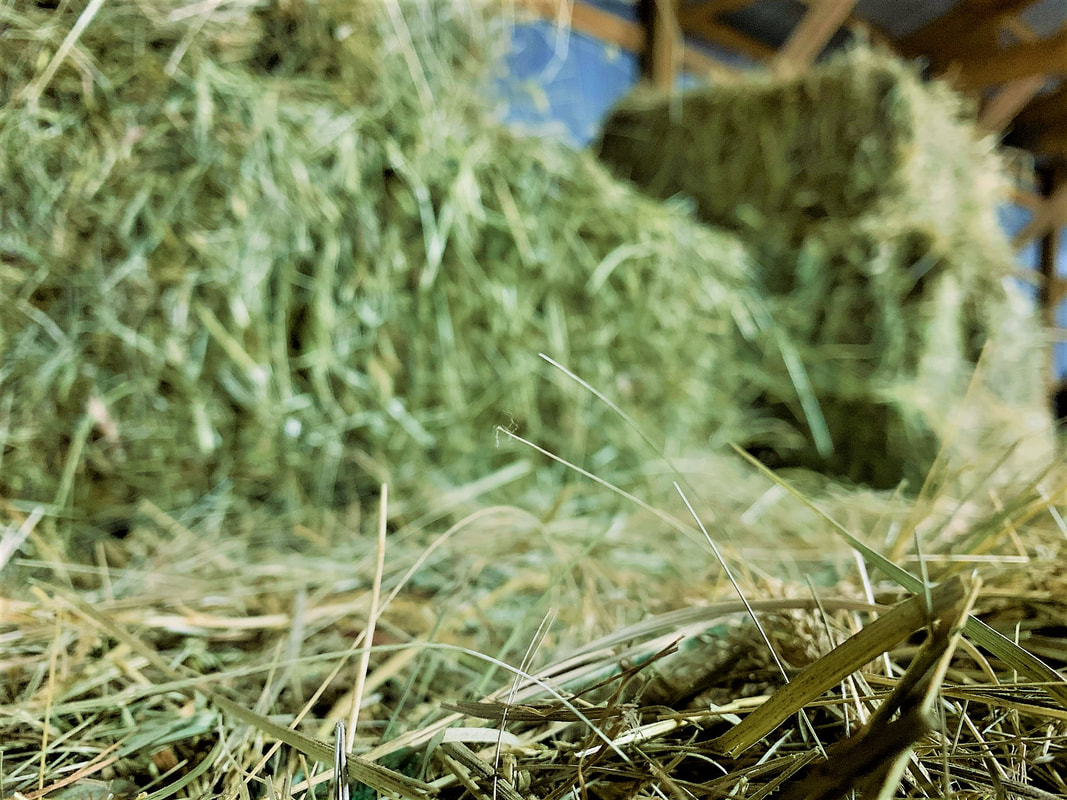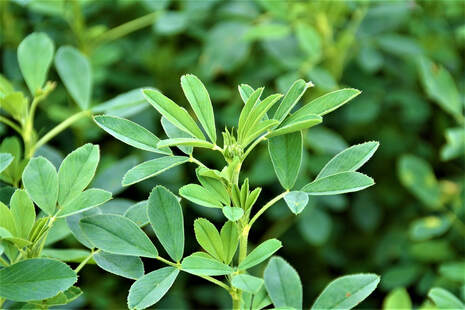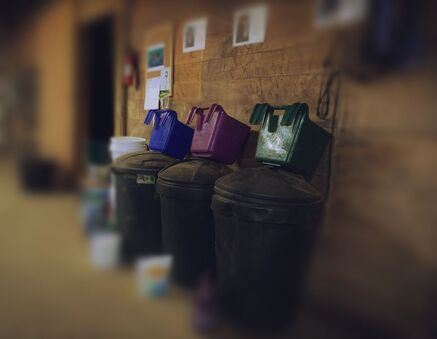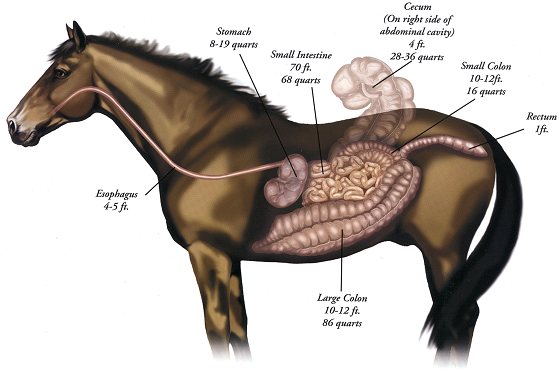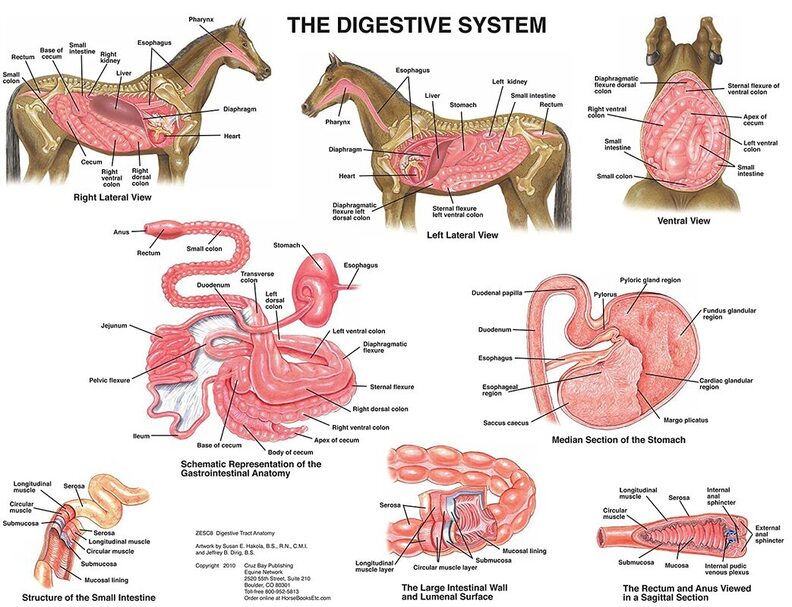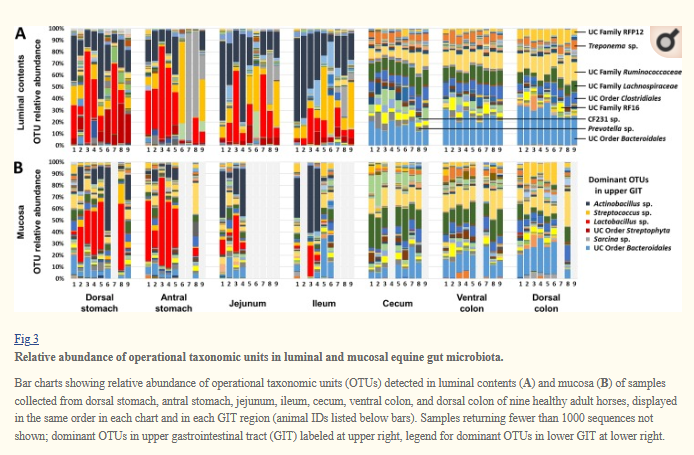Remember .. ever.
Simple & Practical
There seems to be a common issue that Friesians tend to have more gut and digestive issues than other breeds. More specifically, collagen and elasticity issues along the digestive tract. This would then result in more cases of colic, impaction, prolapse and this could also explain the issue behind megaesophagus as well as aortic rupture.
Due to this information, I've tailored my feeding program to be as practical and logical as possible. I've always been a fan of the phrase "less is more." I've kept to a relatively uncomplicated way of making sure all the individual horses' nutritional needs are being met without over- or under-compensating.
There seems to be a common issue that Friesians tend to have more gut and digestive issues than other breeds. More specifically, collagen and elasticity issues along the digestive tract. This would then result in more cases of colic, impaction, prolapse and this could also explain the issue behind megaesophagus as well as aortic rupture.
Due to this information, I've tailored my feeding program to be as practical and logical as possible. I've always been a fan of the phrase "less is more." I've kept to a relatively uncomplicated way of making sure all the individual horses' nutritional needs are being met without over- or under-compensating.
|
Foundation of Feeding
A quality grass hay and pasture is the foundation of my feeding. Good hay contains low digestible fibers that are more difficult to breakdown and, thus, keep the digestive system moving and the horse feeling full. However, a downside to some grass hays is that it may not contain all the nutrition needed. The same goes for pasture grasses. A very important component is to know what you're feeding through forage. You can find out by sending samples in for testing - both hays and pasture grasses. The horses' digestive tract is meant to take in small quantities of food almost continuously. In order to accommodate this physiological design, my horses are kept fed 24/7 with the use of slow feeders all year long. They are kept low as this is the more natural position for the horse to eat. It also keeps the horse from |
eating directly off the ground as much as possible and potentially ingesting additional unwanted dirt, parasites, sand or other organic material. I do need to mention, since we use slow feeders, none of my horses are shod and they do not wear halters continuously. The hay bags are hung in such away to prevent any sort of entanglement.
In addition, the lowered eating position allows the downward flow of mucous into the mouth to aid in the mastication process as well as move any particulates inhaled during eating to flow away from the lungs and towards the nasal openings only to be get sneezed out.
My horses are able to roam freely between a large indoor and outside pen, live in a mixed herd of mares and geldings, and have continuous access to mineral blocks and clean water.
I do not stall my horses at any time other than for illness, injury, or during foaling (if needed). Horses are turned back out independently or with the herd as appropriate for their situation. This freedom of movement is good to keep the digestive tract active and moving.
In addition, the lowered eating position allows the downward flow of mucous into the mouth to aid in the mastication process as well as move any particulates inhaled during eating to flow away from the lungs and towards the nasal openings only to be get sneezed out.
My horses are able to roam freely between a large indoor and outside pen, live in a mixed herd of mares and geldings, and have continuous access to mineral blocks and clean water.
I do not stall my horses at any time other than for illness, injury, or during foaling (if needed). Horses are turned back out independently or with the herd as appropriate for their situation. This freedom of movement is good to keep the digestive tract active and moving.
|
What about alfalfa?
Alfalfa, (Medicago sativa), also called lucerne or purple medic, perennial, cloverlike, leguminous plant of the pea family (Fabaceae), widely grown primarily for hay, pasturage, and silage. (Britannica.com) Alfalfa has many great benefits for horses, especially for different life stages (pregnant or lactating mares, growing horses, etc.), hard-keepers, seniors or those with other health issues (such as metabolic, PSSM, etc.). It's a tasty, highly palatable source of nutrition for horses. It also contains lots of calcium, but is poor in phosphorus. It's important to maintain an 'ideal' dietary calcium to phosphorus ratio per the horse's needs. |
A drawback to using alfalfa with a relatively healthy horse is that it is a highly digestible fiber. This means the horse may not get the same full feeling like they would with a grass hay. This could lead to excessive weight gain and unwanted behaviors due to constantly searching for food such as overeating, pawing, pushiness, resource guarding, getting out of stalls/pens and destructive chewing to name a few. Overeating/obesity is a concern that seems to come up much more frequently with Friesian owners.
I prefer to purchase hays that are mostly mixed grasses. I buy a limited number of 100% alfalfa bales and feed it out as needed. This is mainly during the very cold months of the year where temperatures can plummet to -30°F to -40°F (-34°C to -40°C) for several days at a time as the horses can burn off more calories trying to keep warm than they are able to consume on just a basic grass hay. Any bales that I do buy that are mixed are 20% or less alfalfa. To know more about what you are feeding, see links on the bottom of this page.
I prefer to purchase hays that are mostly mixed grasses. I buy a limited number of 100% alfalfa bales and feed it out as needed. This is mainly during the very cold months of the year where temperatures can plummet to -30°F to -40°F (-34°C to -40°C) for several days at a time as the horses can burn off more calories trying to keep warm than they are able to consume on just a basic grass hay. Any bales that I do buy that are mixed are 20% or less alfalfa. To know more about what you are feeding, see links on the bottom of this page.
|
What about grain and supplements?
Grain and supplements are useful when your horse is lacking nutrition from its forage/hay. In order to know what you are lacking, you need to test your forages. From there, you can build up an adequate feeding plan for your horse(s). Also taking note of their activity level such as training, a mare with a foal or pregnant, a breeding stallion, in competition etc. It is also important to understand the concept of water-soluble vs. fat-soluble when it comes to vitamins and minerals. Water-soluble means that the vitamins or minerals dissolve in water. They are used but not stored in the body and are more easily excreted. The benefit is that the likelihood of reaching toxic levels is "unlikely" if overfed. The disadvantage is that you will need to make sure to continue to supplement enough of the vitamin/mineral to ensure the nutritional needs are being met. |
Fat-soluble means that the body stores them in the liver and fatty tissues until the body needs them. Although the toxicity thresholds may be high for certain vitamins or minerals, it is important to make sure that you're not consistently overfeeding these fat-soluble vitamins. Excess vitamins stored inside the body can become toxic and lead to other complications.
|
Probiotics for Horses
There is not much out there for concrete evidence in research when it comes to the use of probiotics in horses - either for or against their use. Essentially, probiotics are thought to be beneficial microorganisms added to the digestive tract. These are usually types of bacteria or yeasts. There are both human and horse probiotics that contain several of the same types of microorganisms. However, we know that both digestive systems are very different from each other. In order to be beneficial to a horse, these organisms must also make it to the part of the digestive system where the main part of the fermentation process happens. For the horse, this is in the area known as the hindgut. |
However, several of the microorganisms found in horse probiotics are more prevalent in the foregut in horses. This does not provide much added benefit for the horse as food spends very little time in the stomach relative to the entire digestion process.
Furthermore, the environmental conditions for these probiotics that do make it to the hindgut may not be ideal for survival or the competition with other bacteria is too great, and result is that they die off. So, it is important to make sure you understand what types of microorganisms you are feeding, to know where they will most likely reside, and whether or not they will actually be beneficial.
Furthermore, the environmental conditions for these probiotics that do make it to the hindgut may not be ideal for survival or the competition with other bacteria is too great, and result is that they die off. So, it is important to make sure you understand what types of microorganisms you are feeding, to know where they will most likely reside, and whether or not they will actually be beneficial.
Also, these microorganisms are living. They require certain environmental conditions to be met and maintained in order to survive and reproduce. During transportation of products, these conditions may fall outside of survival thresholds and may also result in the microorganisms dying off or being dramatically reduced. Which would mean you're, unknowingly, spending money on a probiotic which may be ineffective completely or partially.
Ideally, conditions should be restored to promote growth of the healthy, naturally pre-existing flora. Talking with your veterinarian or a licensed equine nutritionist can help align you in the right direction that is appropriate for the horse, whatever direction that may be.
|
If you do want to feed probiotics, make sure your probiotic contains the correct types of bacteria or yeasts that would be of the most benefit to the horse; such as those find in the hindgut.
Be sure these probiotics were stored properly to ensure the microorganisms are still alive and will be effective once consumed. |
Links & References
|
Educational/Formal Articles & Studies:
Non-Formal Articles:
|
Page last updated: 3/18/2022
